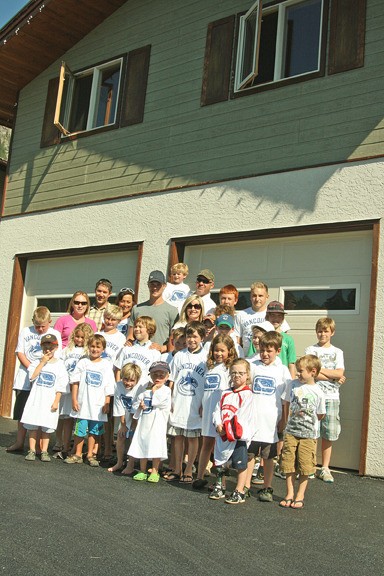Skaters in the Columbia Valley are getting a new off-ice training space this fall.
Located near Dry Gulch, on a hilltop overlooking the Purcells, The Garage training facility is exactly what its name implies — a former garage, rebuilt by personal trainer Lexi McIntosh and her business partner and fellow trainer Tamela Hart into a two-floor training space. The bottom will hold exercise equipment, while the second floor features a sprung floor for yoga and agility training.
McIntosh and Hart, both active in the valley’s figure skating and hockey communities, say they were inspired to create their own space after scrambling to find drty land training facilities in previous years.
“It’s always hard to find a place for all the players and there’s never enough space in the facility, or we have to work around awkward times,” says Hart.
The Garage, on the other hand, can host classes at more convenient hours, with programs specially tailored for each age group — whether it’s beginner figure skaters, minor hockey initiates or the teenagers and young adults of the Columbia Valley Rockies.
For instance, young children might learn to use bosu balls by playing a musical chairs-style game, McIntosh says.
“Something that’s really interesting and fun, but still working with the agility, flexibility, with all the components of fitness without them knowing it.”
The Junior B club, meanwhile, begins pre-season training at The Garage in September. Younger children will start in October.
In addition to McIntosh and Hart, the facility also has a major-league consultant: Mayson Raymond, left winger for the Vancouver Canucks.
“Hockey’s opened a lot of doors for myself. I owe a lot to the game and it’s been good to me,” says Raymond, who visited the facility this past Saturday to meet some of the children who will train there.
“At the end of the day it’s just a game, but it’s now my career and I can maybe help these guys. They can ask me questions and I can be a bit of a role model for these guys.”
Raymond says dry land training may not get the spotlight that on-ice work does, but it’s essential for developing players.
“The time you’re going to put in at the gym is really going to pay off on the ice,” he says. “There’s just so many little muscles you can train that help you get an extra edge.”
